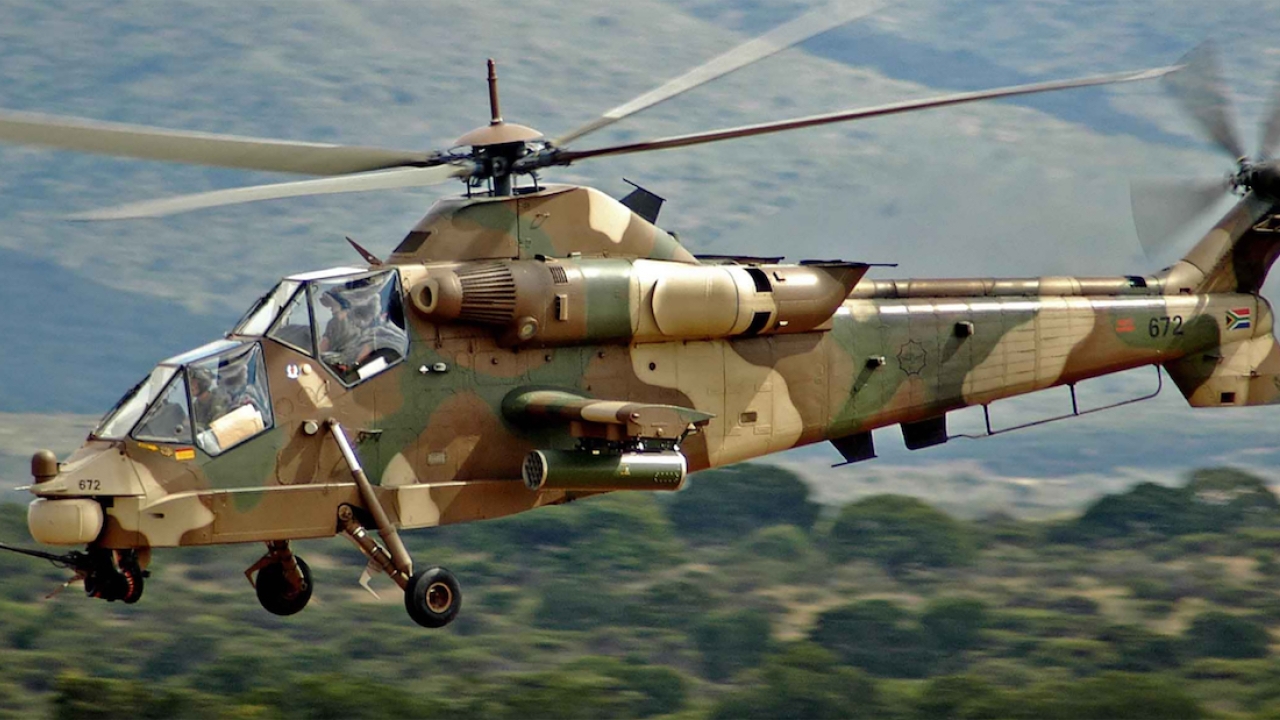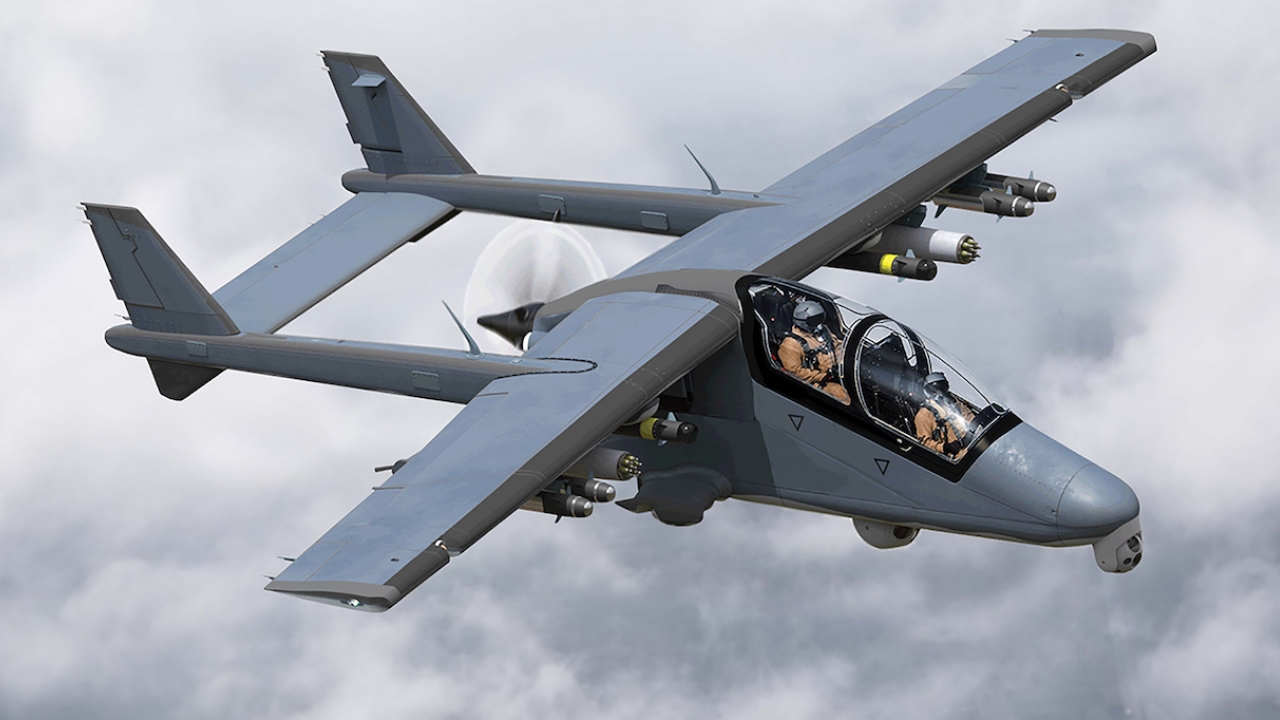Alliance plots the new route for Rooivalk
South Africa’s Denel Group has signed an agreement with Turkey’s Aselsan under which the two companies will collaborate on an upgrade for the South African Air Force’s Atlas Rooivalk attack helicopters.

ON THE UP: South Africa will upgrade its Rooivalk Atlas attack helicopters. Picture: Denel
Although Aselsan is a Turkish company, its Pretoria-based subsidiary, Aselsan South Africa, serves as a centre of excellence for the parent company in Turkey with its own autonomous design and development capabilities, and also acts as the hub for Aselsan’s business development strategy in sub-Saharan African markets.
Aselsan SA has previously provided advanced camera systems to Denel’s OTR test range and to other local South African customers, including the Institute of Maritime Technology, Paramount Technologies, and Reutech Radar Systems.
The agreement between Denel and Aselsan builds on the memorandum of understanding (MoU) signed during the Africa Aerospace and Defense (AAD) 2022 exhibition, under which the companies agreed to work towards the integration of Aselsan’s MEROPS (multi-spectral extended range optical sight) system on the Rooivalk.
MEROPS is the advanced version of the Aselsan CATS (common aperture targeting system) used on the TAI Anka and Bayraktar TB2 UAVs, and promises expanded all-weather and precision attack capabilities. MEROPS was specifically designed for long-range observation and reconnaissance, area illumination and target designation in extreme situations, particularly in low light and in the difficult lighting encountered at dawn and dusk, and in smoke and dust.
The system features the latest image processing and image enhancement technologies, and uses the latest machine vision and AI-based algorithms for moving target and threat identification and classification, and provides multi-target auto-tracking with automatic target re-acquisition.
MEROPS incorporates a thermal imaging sensor (prioritising medium and short-wave for low light performance), a low-light television and a laser rangefinder/designator for accurate delivery of precision-guided weapons.
The MEROPS system consists of a single self-contained LRU (line-replacement unit) with quick-release connections, allowing payloads to be rapidly changed without calibration.
Michael Kgobe, Denel’s interim group chief executive officer, said that Aselsan’s “expertise and capabilities make them the preferred technology partner for the South African Rooivalk modernisation programme,” and that the objectives and scope of the memorandum of understanding (MoU) signed in September 2022 have already been exceeded.
Denel and Aselsan signed a milestone achieved certificate on Thursday 27 July, 2023, detailing the “defined technical solution” and laying out the planned division of work on the avionics modernisation that forms the basis of the Rooivalk modernisation programme from their current block 1F baseline configuration.
It is now expected that Aselsan will also provide and integrate an enhanced glass cockpit with larger screens, digital moving map, a new helmet-mounted display system and a modern flight management system as part of the upgrades to the Rooivalk’s avionics system. The new systems will be driven by two new mission computers and a new weapons systems computer, while a new flight control computer will confer improved agility and responsiveness.
The new helmet-mounted sight display will provide both crew (pilot and WSO) with a heads-up display of critical information in their line of sight, making nap-of-the-earth flight easier and safer. The system will allow the cannon (or missile seeker heads) to be slaved to the pilot’s line of sight, allowing him to engage off-boresight targets with greater accuracy than is possible with the current system (the Thales TopOwl helmet-mounted display).
The upgraded Rooivalk will also receive a new navigation system incorporating an inertial navigation system (INS) and global positioning system (GPS), as well as software-based secure V/UHF and HF radios, a mod-5/S capable identification friend or foe (IFF) transponder and a digital intercom system. A digital data link system will also be provided, facilitating the exchange of real-time information and targeting data and improving overall situational awareness and mission co-ordination. The aircraft is also expected to receive a new mission planning and debriefing system. To improve survivability, the aircraft is expected to receive enhanced defensive systems, including a state-of-the-art radar warning receiver (RWR), chaff and flare dispensers and an infra-red jammer.
The Rooivalk combat support helicopter upgrade aims to improve supportability as well as enhancing operational capability, and there is therefore a strong emphasis on improving reliability and addressing obsolescence issues.
The Denel (originally Atlas) Rooivalk, also known as the combat support helicopter (CSH), is Africa’s only indigenous attack helicopter. Development began in 1984 while apartheid South Africa was under an arms embargo enacted under United Nations Security Council Resolution 418, which prevented the import of attack helicopters.
South Africa began the parallel development of two helicopters based on the Aérospatiale SA 330 Puma/SA332 Super Puma airframe and dynamics system. The Atlas Oryx was a minimum change copy of the Super Puma, while the Rooivalk was an all new design, sharing only the dynamics system of the Super Puma. The Rooivalk’s development began under the project name “Chickadee” in 1984, which became “Project Impose”.
The Rooivalk was preceded by the Atlas XH-1 alpha concept demonstrator, which was based on an Aérospatiale Alouette III airframe with a stepped tandem cockpit and a GAI Rattler 20mm cannon in a steerable turret. First flown on February 3 1985, the XH-1 proved the concept sufficiently for Atlas and the South African Air Force to go ahead with the development of the dedicated Rooivalk attack helicopter. First, two SA330J Pumas were converted as experimental test platform (XTP-1) test beds for the locally-developed avionics and weapon systems developed for the Rooivalk.
The Rooivalk experimental development model (XDM) first flew on February 11, 1990.
The Rooivalk advanced development model (ADM) flew on May 22, 1992 and was used to verify the avionics design and implementation, weapons development, and as an integration platform. The Rooivalk engineering development model (EDM) incorporated lessons learned from the XDM and ADM and was used to qualify the avionics, weapon systems, airframe, and airborne systems before serial production could commence.
Plans to order 36 production Rooivalks to equip three squadrons were cut back for budgetary reasons and the South African Air Force ordered 12 helicopters, designated as the Rooivalk Mk 1 in SAAF service, and the first of these entered service in July 1999. One airframe (679) was damaged beyond repair on August 3 2005, but the remainder were upgraded to Block 1F standards with Mokopa anti-tank guided missiles (ATGMs), and redelivered to number 16 squadron, based at AFB Bloemspruit near Bloemfontein from April 1, 2011.
Denel, the South African Air Force and Armscor looked hard at developing a Rooivalk Mk II helicopter, and there have been discussions with a number of potential export customers, including Egypt, Nigeria, Brazil, India and Poland.
Stay up to date
Subscribe to the free Times Aerospace newsletter and receive the latest content every week. We'll never share your email address.


